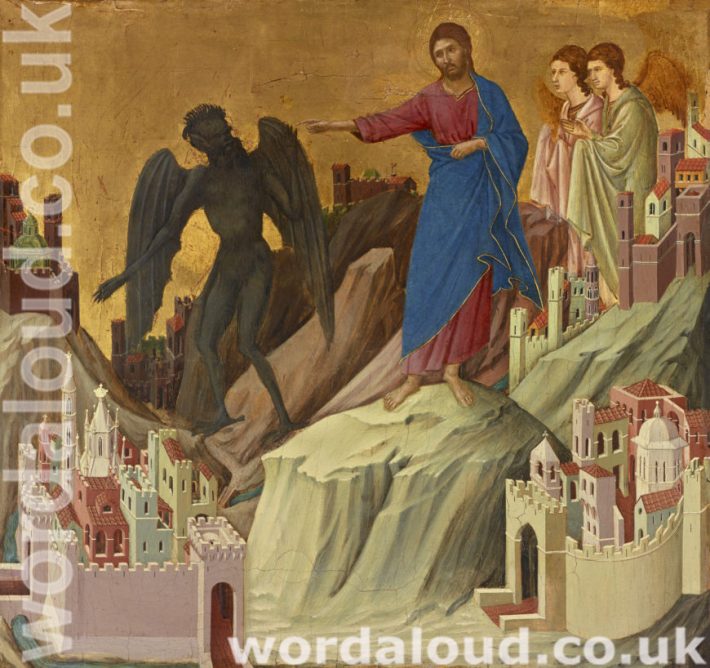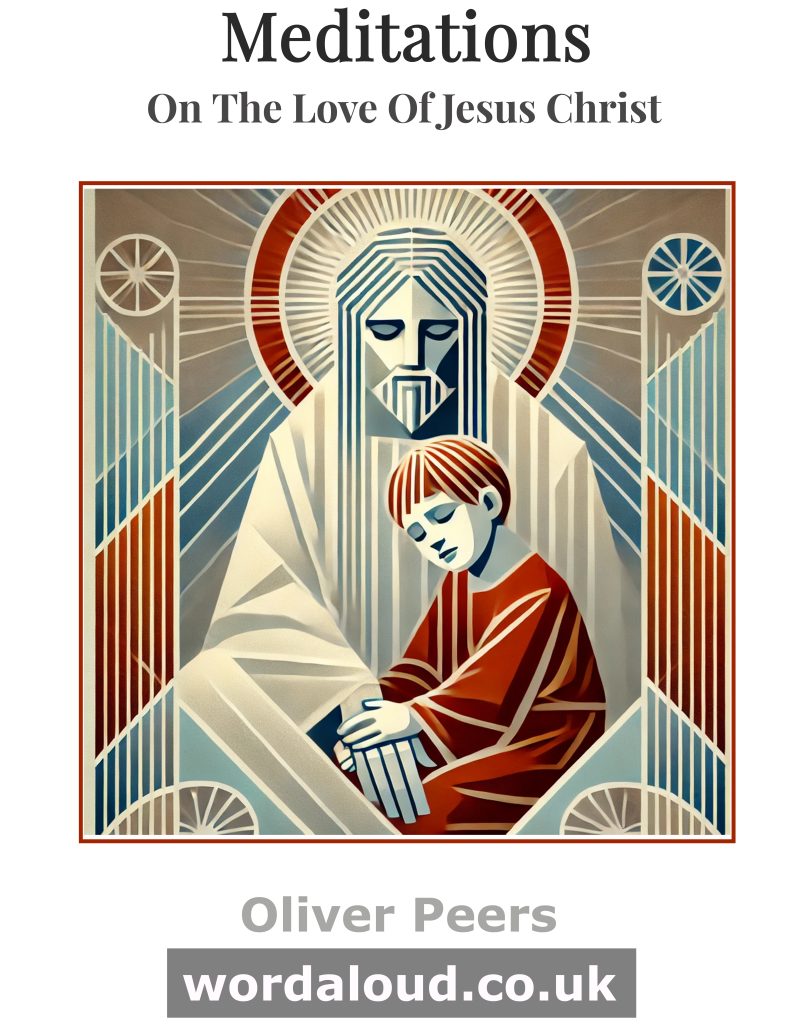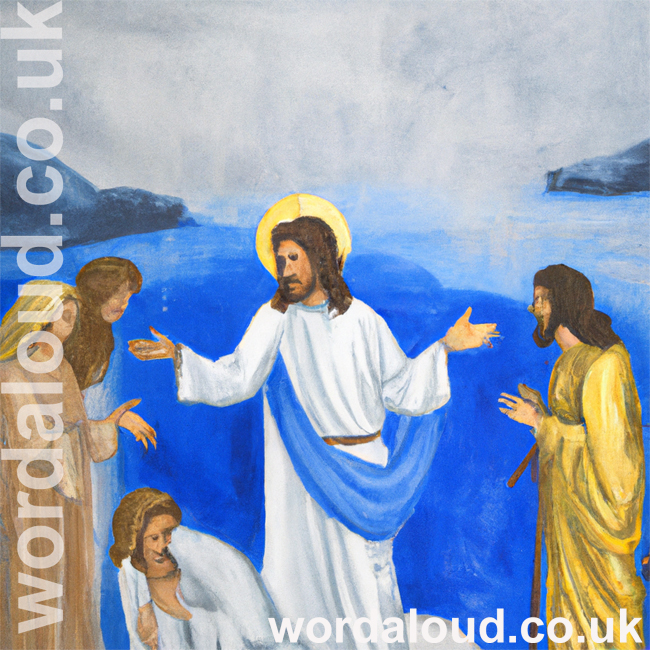Christian Art | Jesus Is Tempted In The Wilderness By Satan
Office Of Readings | Week 27, Friday, Ordinary Time | A Reading From The First Notebook Of Saint Vincent Of Lerins | The Development Of Church Doctrine
‘The development of Church doctrine.’
Saint Vincent of Lerins addresses one of the most enduring questions in Christian theology: how the faith can develop through time while remaining faithful to its original substance. Writing in the fifth century, at a time when the Church was clarifying its doctrine in the face of heresies, Vincent offers a nuanced account of continuity and growth. His central concern is to distinguish between true development and corruption of doctrine.
Vincent begins by affirming that development in religion is both natural and necessary. The life of the Church, he insists, is not static. Just as individual believers grow in understanding, so too does the whole body of the faithful. To deny this is to deny the work of the Holy Spirit, who leads the Church into a deeper comprehension of the truth revealed once for all in Christ. Yet this development must remain faithful to the substance of that revelation; it must be, as Vincent famously puts it, ‘development of the faith, not alteration of the faith’.
To explain this distinction, Vincent employs a striking analogy from the natural world. The growth of the Church’s understanding is like the growth of a living body. From infancy to maturity, a person changes in appearance and ability, yet remains the same being. Growth does not create a new body, but brings to fulfilment what was present in potential from the beginning. In the same way, doctrinal development does not invent new truths; it unfolds and articulates what was already latent in the deposit of faith.
This biological metaphor is central to Vincent’s thought. The ‘law of development of bodies’ provides a model for theological growth that avoids both stagnation and distortion. A healthy body increases in strength and complexity while preserving its integrity. By contrast, if something is added that does not belong to its nature, or if something essential is lost, the body becomes deformed or dies. So too with the faith: it can mature, but cannot mutate.
Vincent’s argument reflects the Church’s experience of defining doctrine in response to controversy. The formulation of the Nicene Creed, for instance, was not an innovation but a clarification—an explicit statement of what had always been believed. Over time, the Church gives sharper expression to truths that were implicit in apostolic teaching. This process, guided by the Holy Spirit, ensures that the faith remains living and intelligible across changing cultures and centuries.
The image of the seed and harvest with which Vincent concludes develops this same idea. The early Church ‘sowed the good seed in the harvest field’, and later generations must reap the same truth, not ‘the intrusive growth of error’. True development is a deepening of what was first planted; it preserves the identity of the faith while allowing it to bear new fruit. In every age, the Church must discern whether growth is faithful to its roots or has strayed into distortion.
Vincent’s vision of development became a touchstone for later theology, notably in John Henry Newman’s Essay on the Development of Christian Doctrine (1845), which expanded on these principles. Yet Vincent’s original insight remains clear and balanced. The Church must grow in understanding, but its growth must always be organic—faithful to its nature, coherent with its past, and guided by the Spirit who ensures that truth does not change, but unfolds.

A Reading From The First Notebook Of Saint Vincent Of Lerins | The Development Of Church Doctrine
Is there to be no development of religion in the Church of Christ? Certainly, there is to be development and on the largest scale.
Who can be so grudging to men, so full of hate for God, as to try to prevent it? But it must truly be development of the faith, not alteration of the faith. Development means that each thing expands to be itself, while alteration means that a thing is changed from one thing into another.
The understanding, knowledge and wisdom of one and all, of individuals as well as of the whole Church, ought then to make great and vigorous progress with the passing of the ages and the centuries, but only along its own line of development, that is, with the same doctrine, the same meaning and the same import.
The religion of souls should follow the law of development of bodies. Though bodies develop and unfold their component parts with the passing of the years, they always remain what they were. There is a great difference between the flower of childhood and the maturity of age, but those who become old are the very same people who were once young. Though the condition and appearance of one and the same individual may change, it is one and the same nature, one and the same person.
The tiny members of unweaned children and the grown members of young men are still the same members. Men have the same number of limbs as children. Whatever develops at a later age was already present in seminal form; there is nothing new in old age that was not already latent in childhood.
There is no doubt, then, that the legitimate and correct rule of development, the established and wonderful order of growth, is this: in older people the fullness of years always brings to completion those members and forms that the wisdom of the Creator fashioned beforehand in their earlier years.
If, however, the human form were to turn into some shape that did not belong to its own nature, or ever if something were added to the sum of its members or subtracted from it, the whole body would necessarily perish or become grotesque or at least be enfeebled. In the same way, the doctrine of the Christian religion should properly follow these laws of development, that is, by becoming firmer over the years, more ample in the course of time, more exalted as it advances in age.
In ancient times our ancestors sowed the good seed in the harvest field of the Church. It would be very wrong and unfitting if we, their descendants, were to reap, not the genuine wheat of truth but the intrusive growth of error.
On the contrary, what is right and fitting is this: there should be no inconsistency between first and last, but we should reap true doctrine from the growth of true teaching, so that when, in the course of time, those first sowings yield an increase, it may flourish and be tended in our day also.
Christian Prayer With Jesus Christ
Lord of truth and wisdom,
you planted in your Church the seed of eternal faith.
Grant that, as your people grow in knowledge and understanding,
they may never depart from the apostolic teaching,
but remain steadfast in the one truth revealed in Jesus Christ.
Let your Spirit guide the Church’s growth,
so that her doctrine may mature without corruption
and her witness remain pure and living through all ages.
Through Christ our Lord.
Amen.
Glossary Of Christian Terms
Saint Vincent of Lerins (d. c. 445) – A Gallic monk and theologian, best known for his Commonitorium, in which he articulated principles for discerning authentic doctrinal development and continuity in the Church.
Development of doctrine – The process by which the Church comes to a deeper understanding of the truths of faith without changing their substance.
Alteration of the faith – The corruption or distortion of revealed truth by addition, subtraction, or change of meaning.
Deposit of faith – The complete revelation given by God through Christ and the apostles, entrusted to the Church to be faithfully preserved and transmitted.
Analogy of the body – Vincent’s comparison between the growth of human beings and the organic development of doctrine: growth is genuine when it preserves identity.
Seed and harvest – Biblical imagery (cf. Mark 4:26–29; 1 Corinthians 3:6) used to describe the continuity between what was sown by the apostles and what later generations reap in doctrine and faith.
Organic growth – A term used in theology to describe natural, coherent development within the same essential structure, as opposed to external or artificial change.
Heresy – A belief or teaching that contradicts or distorts the established doctrine of the Church.
Nicene Creed – The formal statement of Christian faith formulated at the Council of Nicaea (AD 325) and expanded at Constantinople (AD 381), a key example of doctrinal clarification rather than innovation.








